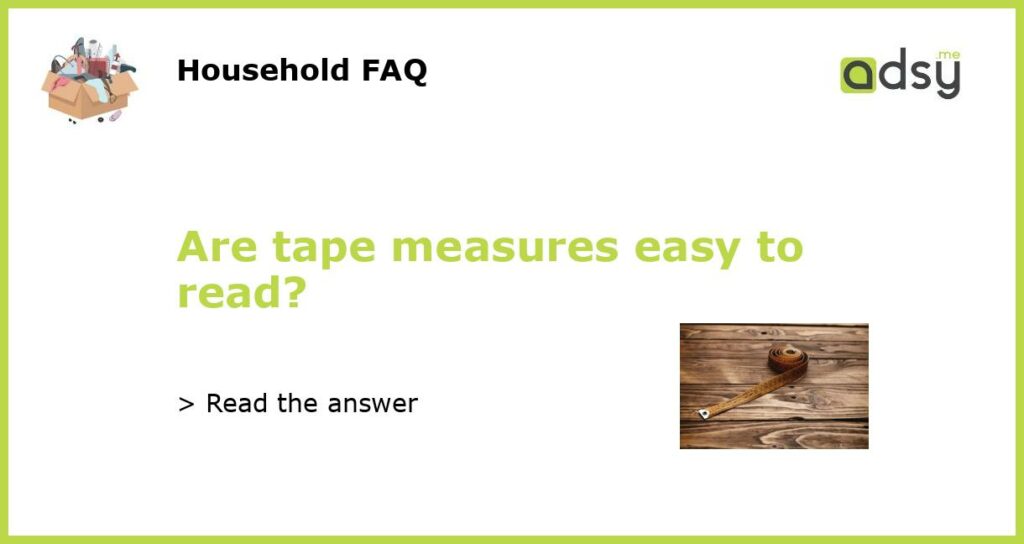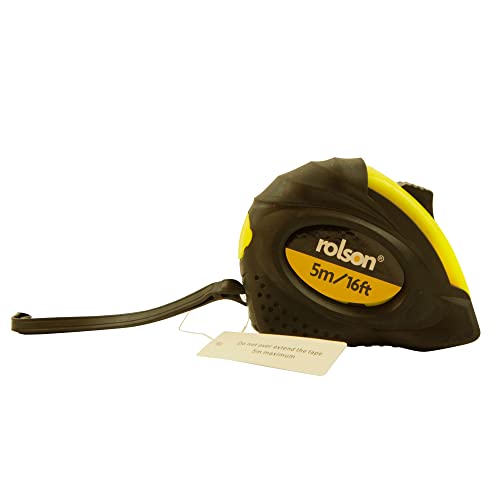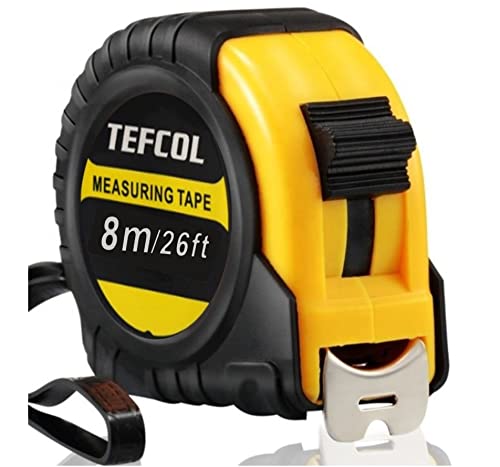Understanding Tape Measure Readability
If you’ve ever used a tape measure, you know how important it is to be able to accurately read the measurements. Whether you’re a professional carpenter or just doing some DIY home improvement, having a tape measure that is easy to read can make a big difference in the quality of your work.
The Importance of Easy-to-Read Tape Measures
Accuracy is key when it comes to measuring, especially in construction and woodworking. A small error in measurement can result in uneven cuts, misaligned fixtures, and other costly mistakes. This is why having a tape measure that is easy to read is crucial.
Not all tape measures are created equal when it comes to readability. Some models have small and cramped markings, making it difficult to accurately read the measurements. Others may have faded or worn markings, making them practically useless. These issues can lead to errors in measurement and ultimately affect the quality of your work.
What Makes a Tape Measure Easy to Read?
There are several factors that contribute to the readability of a tape measure:
- Clear markings: The markings on the tape measure should be crisp, bold, and easy to distinguish. The numbers should be clearly labeled and spaced apart for quick and accurate readings.
- Large numbers: Larger numbers are generally easier to read, especially for those with visual impairments or in low-light conditions. Look for a tape measure with prominently displayed and well-sized numbers.
- Contrasting colors: The color contrast between the background and the markings can greatly impact readability. A tape measure with contrasting colors, such as white markings on a black background, can enhance visibility and make it easier to read.
- Durable markings: Over time, the markings on a tape measure can become faded or worn, making them difficult to read. Look for a tape measure with durable and long-lasting markings to ensure readability even after extended use.
- Clear and consistent scale: A tape measure with a clear and consistent scale, such as inches or centimeters, can help prevent confusion and errors in measurement. The scale should be easy to follow and understand.
Choosing the Right Tape Measure
When selecting a tape measure, take the time to consider its readability. Here are some tips to help you choose a tape measure that is easy to read:
- Test it out: Before purchasing a tape measure, try it out in-store if possible. Take a close look at the markings and ensure that they are clear and easy to read.
- Read reviews: Look for reviews or opinions from other users online to get an idea of the tape measure’s readability. Pay attention to any feedback regarding the clarity and durability of the markings.
- Consider your needs: Think about your specific projects and requirements. If you frequently work in low-light conditions, a tape measure with high-contrast markings may be beneficial. If you have visual impairments, you may want to look for a tape measure with larger numbers.
- Invest in quality: While it may be tempting to go for a cheaper option, investing in a high-quality tape measure can save you time and frustration in the long run. High-quality tape measures often have better readability and durability.
- Replace when necessary: Over time, tape measures can wear out and become less readable. If you notice that the markings are fading or becoming difficult to read, it may be time to replace your tape measure.
Easy-to-read tape measures are an essential tool for accurate measurements in various industries and DIY projects. By considering factors such as clear markings, large numbers, contrasting colors, durable markings, and a clear and consistent scale, you can find a tape measure that is easy to read and will help you achieve precise results in your projects.






